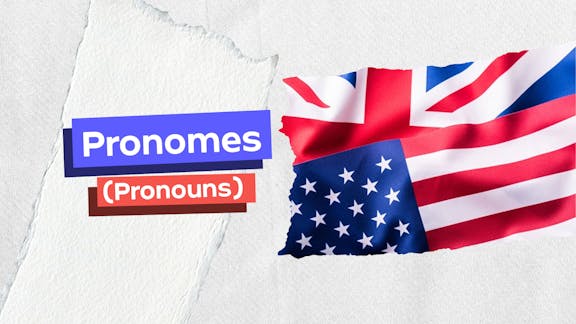Mark the CORRECT alternative.
O texto a seguir se refere a questão.
Challenges concerning multiculturalism in Canada
The official Canadian policy of multiculturalism has been updated twice since its introduction in
1971. It was originally created as a policy based on the logic of ethnicity, modified to deal with racism and
amended to include freedom of religion. In 1988 the Canadian Multiculturalism Act was passed.
Canada is considered a nation of immigrants such that cultural diversity is often presented as the
essence of national identity. However, it is difficult to negotiate social and political policy when trying to
speak for such a varied populace. Two very real challenges that Canada faces in regard to multiculturalism
are the clash of cultures and the socioeconomic position of immigrants.
An example of clash of cultures is the one between English and French-Canada. The province of
Quebec has always asserted a distinct identity and an inclination towards separatism from the rest of the
country. In 1995, there was a referendum in the province of Quebec concerning separation in which 49% of
the voting population voted “yes” and 51% voted “no”. The clash between French and English-Canada is
primarily a cultural clash with Quebec concerned with preserving its own history, language and values;
fearing these things are apt to become lost within English-Canada. Since the referendum, tensions have
cooled a bit and Canada’s national administration has increased their efforts to accommodate Quebec identity
within a Canadian identity.
Another challenge of multiculturalism is the socioeconomic position of immigrants. Diversity is
supported by governmental policy but Canada is still a society where racist interactions and poor-bashing
are severely detrimental to minorities (especially recent arrivals). There are many barriers to equal
integration, especially in education, housing and employment. For example, in the workforce it is very
difficult to get a job when the potential employer feels you are not speaking “proper” English or you do not
have any Canadian work experience on your resumé. This often leads to overqualified people in full-time
minimum wage positions with little or no benefits and no access, time or funds for language classes or other
training programs. These sorts of circumstances lead to isolation, alienation, poverty and unsafe
environments where a new immigrant does not feel safe to report or act against harassment or abuse.
Source: Adapted from http://globalcitizens.pbworks.com/w/page/9036226/Challenges%20Concerning%20Multiculturalism%20in%20Canada.
O texto a seguir se refere a questão.
Challenges concerning multiculturalism in Canada
The official Canadian policy of multiculturalism has been updated twice since its introduction in 1971. It was originally created as a policy based on the logic of ethnicity, modified to deal with racism and amended to include freedom of religion. In 1988 the Canadian Multiculturalism Act was passed.
Canada is considered a nation of immigrants such that cultural diversity is often presented as the essence of national identity. However, it is difficult to negotiate social and political policy when trying to speak for such a varied populace. Two very real challenges that Canada faces in regard to multiculturalism are the clash of cultures and the socioeconomic position of immigrants.
An example of clash of cultures is the one between English and French-Canada. The province of Quebec has always asserted a distinct identity and an inclination towards separatism from the rest of the country. In 1995, there was a referendum in the province of Quebec concerning separation in which 49% of the voting population voted “yes” and 51% voted “no”. The clash between French and English-Canada is primarily a cultural clash with Quebec concerned with preserving its own history, language and values; fearing these things are apt to become lost within English-Canada. Since the referendum, tensions have cooled a bit and Canada’s national administration has increased their efforts to accommodate Quebec identity within a Canadian identity.
Another challenge of multiculturalism is the socioeconomic position of immigrants. Diversity is supported by governmental policy but Canada is still a society where racist interactions and poor-bashing are severely detrimental to minorities (especially recent arrivals). There are many barriers to equal integration, especially in education, housing and employment. For example, in the workforce it is very difficult to get a job when the potential employer feels you are not speaking “proper” English or you do not have any Canadian work experience on your resumé. This often leads to overqualified people in full-time minimum wage positions with little or no benefits and no access, time or funds for language classes or other training programs. These sorts of circumstances lead to isolation, alienation, poverty and unsafe environments where a new immigrant does not feel safe to report or act against harassment or abuse.
Source: Adapted from http://globalcitizens.pbworks.com/w/page/9036226/Challenges%20Concerning%20Multiculturalism%20in%20Canada.
Gabarito comentado
Tema central: A questão exige o reconhecimento de funções gramaticais e significados de palavras na estrutura de frases em inglês – um ponto clássico em provas de Vestibular, dentro dos aspectos linguísticos (Linguistic Aspects).
Análise da alternativa correta – E
A alternativa E está correta porque explica o uso distinto das palavras “concerning” e “concerned”:
- “Concerning” é uma preposição que equivale a “about” ou “a respeito de”, indicando o tema ou tópico (exemplo: “concerning separation” = sobre a separação).
- “Concerned”, nesse contexto (“concerned with preserving”), é um adjetivo no particípio que significa “interessado, envolvido com”. Não indica preocupação, mas engajamento com algo.
Saber distinguir funções gramaticais por contexto é fundamental, pois o inglês traz muitas palavras que mudam de sentido conforme o uso – ponto que causa dúvidas comuns em questões de interpretação e gramática.
Como resolver: Quando se deparar com palavras semelhantes, procure identificar a classe gramatical (substantivo, adjetivo, preposição, etc.) e aplique o significado mais adequado ao contexto da frase.
Análise das alternativas incorretas:
- A: O present perfect (“has been updated”) exprime ações passadas com efeito no presente, mas não necessariamente indica uma ação que continua até agora, e sim que ocorreu em momento não especificado até o presente.
- B: “Since the referendum” estabelece um marco temporal, logo “have cooled” refere-se a uma ação desde aquele evento, não a um passado não especificado como “has always asserted”.
- C: Os afixos das palavras citadas não convertem exclusivamente verbos em substantivos. “Unsafe” é um adjetivo (não substantivo), reforçando que a alternativa está errada.
- D: O sufixo “-ing” possui funções variadas (gerúndio, adjetivo, preposição). Em “concerning separation”, “concerning” atua como preposição, e não é gerúndio. Fique atento a essas variações de uso!
Dica de prova: Fique atento(a) às palavras polissêmicas e aos contextos sintáticos! Busque no texto ou na frase pistas para identificar corretamente a função das palavras, evitando generalizações indevidas ou confusões por semelhança.
Gostou do comentário? Deixe sua avaliação aqui embaixo!






